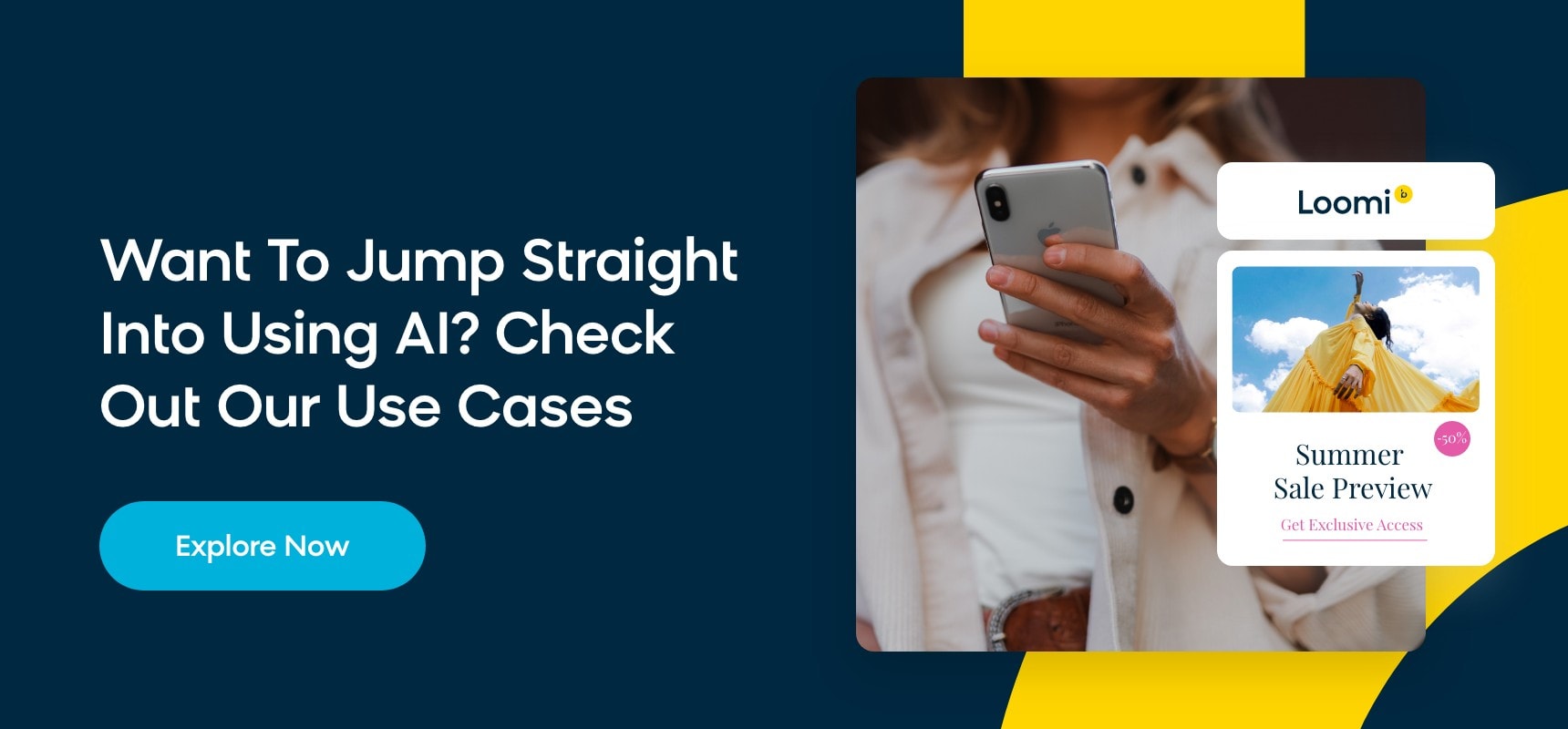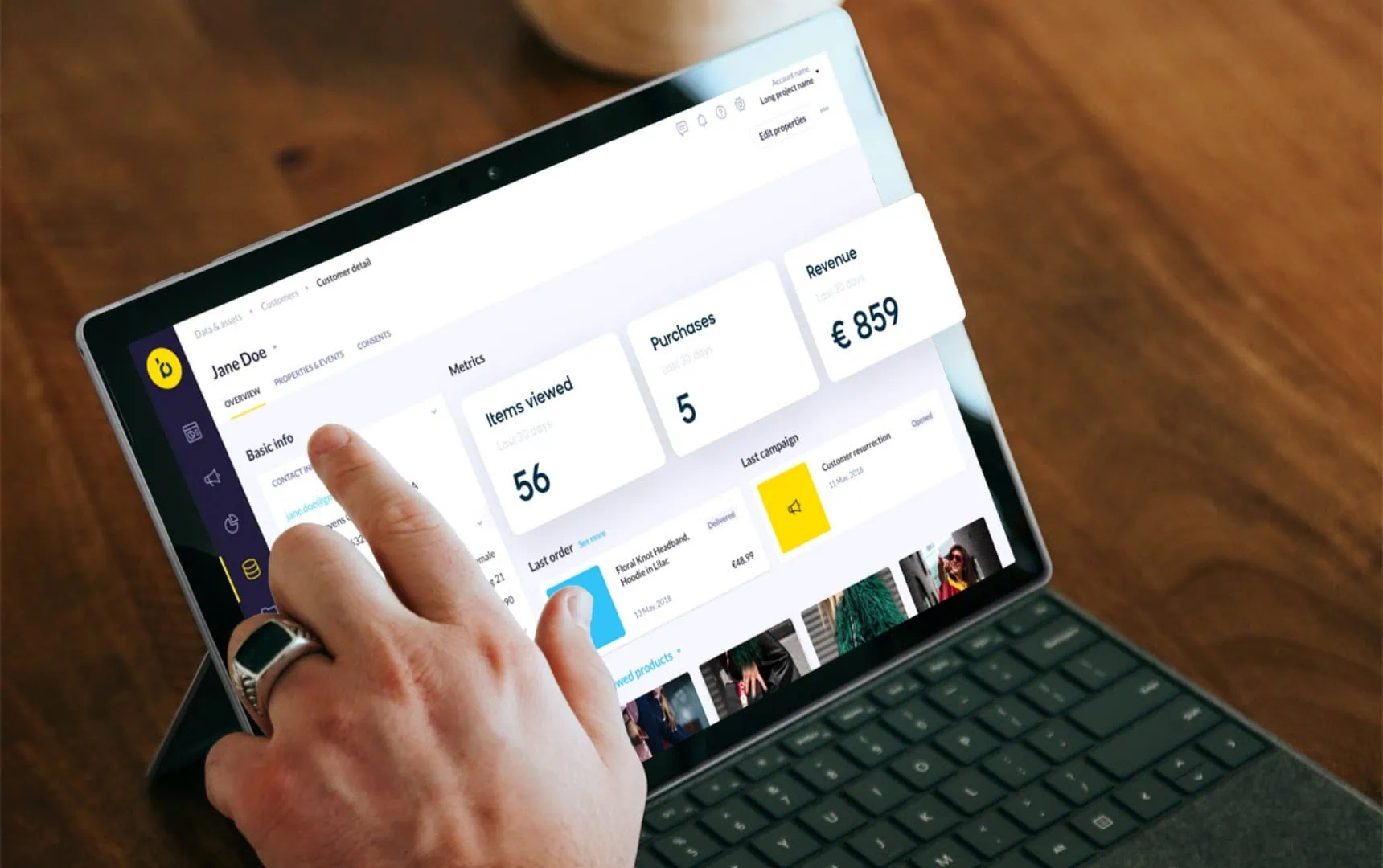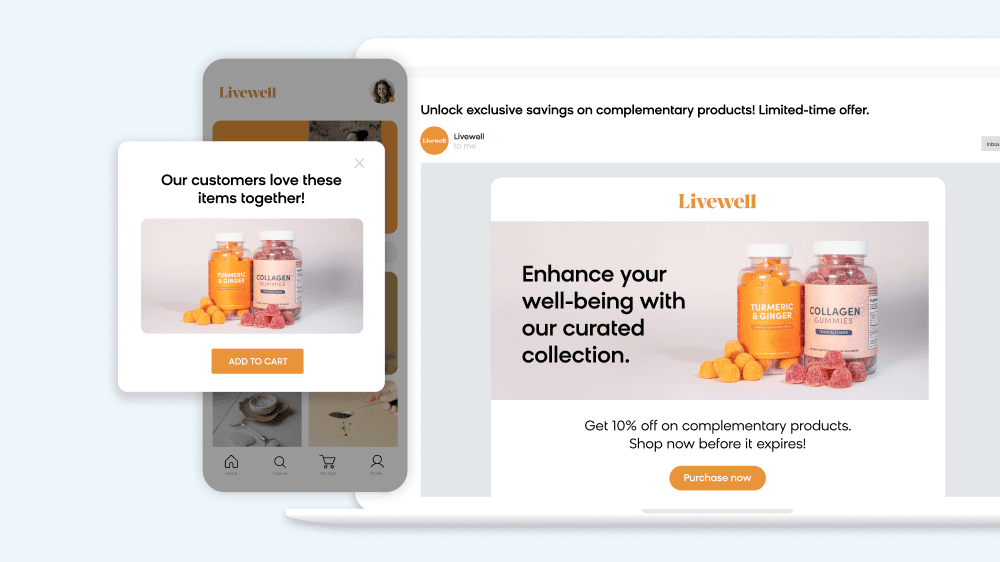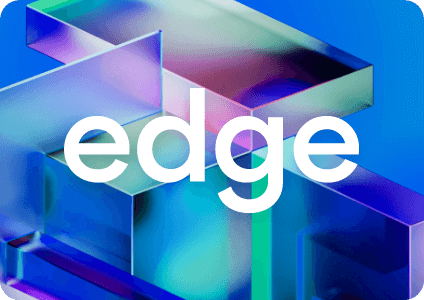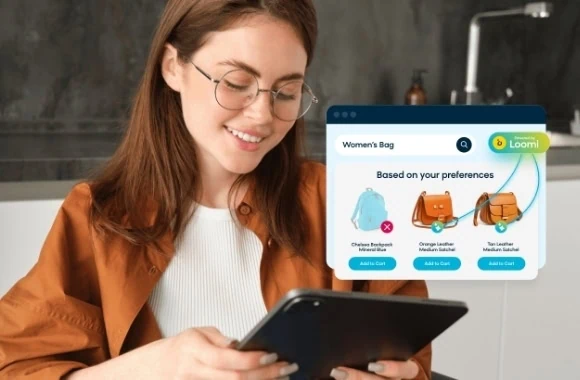Personalized customer experiences have become the basis for competitive advantage. However, it’s not as simple as just using a first name on an email. Consumers expect organizations to deliver personalized interactions and over three-quarters (76%) get frustrated when this doesn’t happen.
Delivering a personalized experience requires every physical and virtual touchpoint to be designed to speak directly to an individual. But it can be incredibly challenging to achieve that at scale. That’s why over 9 in 10 (92%) organizations are looking at AI for personalization — it connects customers with what they really want, which creates endless new paths to purchase, greater profitability, and fast business growth.
What Is AI Personalization?
AI personalization uses a customer’s demographic and past behavioral data — such as browsing and purchasing history, as well as social media interactions — to learn about the specific needs and preferences of that individual. Using this insight, the technology can predict what they may be interested in, where they want to engage with your brand, and what the next best customer touchpoint would be in their ideal shopping journey.
Key capabilities of AI personalization include:
- Behavioral tracking that monitors customer actions across all touchpoints
• Real-time adaptation that adjusts experiences based on current behavior
• Predictive recommendations that anticipate customer needs and preferences
Unlike traditional personalization methods that rely on basic demographic data or manual segmentation, AI personalization continuously learns and evolves, creating truly dynamic customer experiences. This allows AI-powered personalization platforms to streamline key operations and maximize customer engagement across all your channels.
AI can help you choose the right channel for the right campaign; make the right product recommendations in real time; tailor your messaging, send times, and incentives to certain behaviors, and so much more.
An example of AI personalization is when an ecommerce website includes a “customers also bought” section to encourage shoppers to add more items to their cart, or when a brand sends an email geared towards a certain demographic’s needs, like a winter clothing sale for customers based in colder climates.
These AI-powered marketing campaigns aren’t just a nice way to increase customer satisfaction — they’re essential for a brand looking to increase their bottom line. When you can customize these important interactions at scale, you can boost customer engagement, conversion rates, and revenue.
What Is Hyper-Personalization?
Hyper-personalization takes the AI customer experience one stage further to allow an organization to engage with its customers on a one-to-one basis. From a marketing perspective, the message, content, offers, and product recommendations are all customized for an individual.
According to research from McKinsey, fast-growing organizations gain 40% more revenue from hyper-personalization when compared to slower-growing competitors. This is because they’re using the intelligence gained from their customer data to know how to fulfill a specific customer need at a specific moment.
How Agentic AI Makes Hyper-Personalization Possible
Achieving this level of hyper-personalization demands more than static AI algorithms and pre-set workflows. To truly cater to each customer on an individual level, businesses need AI that can work autonomously to achieve your goals.
This is where agentic AI shines. By bringing autonomy, adaptability, and real-time optimization to business operations, agentic AI is redefining how brands deliver tailored customer experiences that feel genuinely one-to-one.
Agentic AI can operate independently, continuously learning from customer behavior and making decisions without manual intervention. Unlike traditional AI, which waits for input, agentic AI drives proactive actions, seeking the best possible outcomes for both the business and its customers.
Agentic personalization opens up an unprecedented opportunity for businesses to tailor customer engagement to each of their customers across all their channels, at a speed and scale never seen before.
5 Real-World AI Personalization Examples
The majority (82%) of organizations use AI personalization to improve the customer experience and are rewarded with five to eight times the return on marketing spend. It’s the smart choice because it enables organizations to identify the small details that make customers feel valued and understood, and uses them at scale to increase revenue and decrease churn.
1. Personalized Product Recommendations
When customers make a first-time purchase, two-thirds (67%) value relevant product recommendations as the most important factor when deciding whether or not to check out.
In a hyper-competitive and noisy market, AI personalization makes it possible to collate and analyze vast quantities of historical data to make relevant recommendations in real time. For example, cosmetics and beauty brand Yves Rocher increased purchase rate by 11x compared to a top-seller recommendation.
2. AI-Powered Chatbots
If customers encounter issues or have questions while browsing your site, you need a scalable way to help them out.
Traditional chatbots were a somewhat functional solution, but generated a lot of their own issues since they were confined to preprogrammed, rules-based answers. Fortunately, agentic AI addresses a lot of the frustrations people had with chatbots.
Able to understand customer queries, recall past conversations, and engage with customers in real time, agentic AI-powered chatbots can mimic human conversation to optimize the online experience. These AI agents act as virtual shopping assistants, elevating the customer experience by offering personalized interactions.
The specialty retail group TFG incorporated an AI-powered chatbot into its on-site experience and saw immediate results during the busy Black Friday period. With a helpful, proactive agent engaging with shoppers at key points as they browsed products, TFG saw a 35.2% increase in online conversion rates, a 39.8% rise in revenue per visit, and a 28.1% reduction in exit rates.
3. Personalized Website Content
AI personalization isn’t just great for first-time buyers; 78% of customers say it’s more likely to make them repurchase because they feel the organization knows them better.
AI personalization is essential to meet this expectation. With AI, organizations are able to show their customers the personalized content they want to see when they want to see it.
When used in a web personalization strategy, it allows marketers to evolve their campaigns beyond targeting broad demographics to executing individual experiences.
For example, HP Tronic is a leader in the consumer electronics and household appliances market in the Czech Republic and Slovakia. By using AI to help personalize its website content, it increased its conversion rate for new customers by 136%.
4. Personalized Email Content
Of the organizations that have adopted AI for personalization, 87% use it to improve their email marketing. Organizations need email personalization strategies to avoid their messages being labeled as spam and their domains being blacklisted.
From the first welcome email to post-purchase sequences, contextual communications ensure the right message is sent to the right person at the right time. The UK brand Benefit Cosmetics is one company to take advantage of AI personalization in its email marketing. By triggering the next message in a sequence based on the last customer action taken, it increased click-through rates by 50% and revenue by 40%.
5. Personalized Ad Targeting
Every day, the average person sees between 4,000-10,000 ads, which means for an ad to be remembered or acted upon, it must stand out.
AI allows organizations to create personalized ads in real time by using key demographic and behavioral data — including a person’s social posts, comments, likes, and shares. Before AI personalization, this simply wasn’t possible.
To reach its customers with the right message, the British music and entertainer retailer HMV harnessed agentic AI to segment its audiences and personalize its ad targeting. With real-time customer data fueling ad audiences and campaigns, the brand saw a 14% campaign revenue lift week over week.
Strategic Benefits of AI Personalization
AI personalization delivers measurable value that goes beyond customer satisfaction. Here are the key strategic benefits organizations can expect:
Increased Conversion Rates
Personalized experiences directly impact purchasing decisions. Organizations using AI personalization typically see 15-25% increases in conversion rates compared to generic approaches. This improvement comes from showing customers exactly what they’re looking for when they’re most likely to buy.
Higher Customer Lifetime Value
By consistently delivering relevant experiences, AI personalization increases customer loyalty and repeat purchases. Organizations that excel at personalization strategies report 15% increases in customer retention through AI-powered approaches.
Improved Marketing ROI
Targeted campaigns using AI personalization generate significantly better returns than broad-based marketing. Organizations typically achieve 5-8x return on marketing spend by focusing resources on the most promising prospects with personalized messaging.
Enhanced Customer Satisfaction
Personalized experiences make customers feel valued and understood. This leads to higher satisfaction scores, positive reviews, and valuable word-of-mouth marketing that drives organic growth. Research shows 56% of consumers become repeat buyers after experiencing personalization.
Competitive Differentiation
In crowded markets, personalization becomes a key differentiator. Organizations that successfully implement AI personalization gain sustainable competitive advantages that are difficult for competitors to replicate quickly.
Creating an AI Personalization Strategy
Implementing AI personalization successfully requires a structured approach. Here’s a three-phase framework for developing your strategy:
Phase 1: Data Readiness
Before deploying AI personalization, organizations must ensure their data infrastructure can support real-time personalization efforts. This includes consolidating customer data from multiple sources, ensuring data quality and consistency, and establishing proper data governance protocols.
Key considerations include implementing customer data platforms (CDPs), setting up proper tracking mechanisms across all touchpoints, and ensuring compliance with privacy regulations like GDPR and CCPA.
Phase 2: Tool Selection
Choosing the right AI personalization platform involves evaluating multiple factors beyond just features and functionality.
Consider the platform’s ability to integrate with your existing tech stack, its scalability to handle your customer base, and the level of customization available. ROI considerations should include implementation costs, ongoing maintenance, and expected performance improvements.
Look for solutions that offer transparent AI decision-making and provide clear analytics on personalization performance.
Phase 3: Deployment & Testing
Successful implementation requires careful planning and continuous optimization.
Start with pilot programs on specific customer segments or channels before full deployment. Implement robust A/B testing frameworks to measure the impact of personalized experiences against control groups. Establish key performance indicators (KPIs) that align with business objectives, and create feedback loops for continuous learning and improvement.
AI Tools & Technologies
Understanding the core technologies behind AI personalization helps organizations make informed decisions about implementation and optimization:
Recommendation Engines
Recommendation engines form the backbone of most AI personalization systems. Collaborative filtering analyzes user behavior patterns to suggest products based on similar customer preferences, while content-based recommendations focus on product attributes and user preferences. Modern systems combine both approaches for more accurate and diverse recommendations.
Machine Learning Models
Predictive analytics and behavioral modeling enable AI systems to anticipate customer needs before they’re explicitly expressed. These models analyze historical data, real-time behavior, and contextual factors to predict future actions, optimal timing for engagement, and personalized content preferences.
Advanced models can identify micro-segments and individual customer propensities with remarkable accuracy.
Agentic AI Systems
Autonomous personalization represents the next evolution in AI technology. These self-learning systems can make real-time decisions about customer experiences without human intervention.
Agentic AI systems continuously optimize their performance based on outcomes, adapting to changing customer behaviors and market conditions while maintaining alignment with business objectives.
Challenges in AI Personalization
The market is booming with many companies already increasing their personalization investments despite economic challenges — 69% of businesses are investing more in personalization. However, there are still several challenges organizations must be mindful of to ensure they use it to the best effect.
Data Collection and Integration
Every marketer has the importance of customer segmentation drilled into them because it makes their organization 60% more likely to understand their customers’ challenges and 130% more likely to know their intentions.
But securing agreement on how the organization defines its target market is tough — it’s possible to segment a market in several ways, such as by demographics, geography, psychographics, behavior, needs, and values. Data silos and quality issues can prevent effective segmentation and personalization.
One of the most effective ways to approach segmentation is the creation of customer personas. Defining the segment via a person, rather than a bullet point list of attributes, makes it easier to communicate across the business — and keep that persona front of mind when making decisions.
This is vital for brands looking to make the most of AI personalization. AI is only as good as the data points it has access to, and by organizing and clearly defining customer personas, you can empower your behavioral targeting capabilities to reach their true potential.
Privacy and Consent Management
Despite strict regulations like the GDPR, only 51% of customers trust organizations to keep their personal data secure and use it responsibly. Additionally, 48% of consumers experienced at least one security breach in the past year, representing a 14-point increase from 2023. Clearly, there remains a disconnect between organizational enthusiasm for AI and customer confidence in how it’s being used.
When adopting AI personalization, organizations must prioritize transparency and implement robust first-party data strategies. Clear privacy policies that explain what customer data is collected and how it is used to deliver a personalized experience will help restore customer confidence.
Model Training and Optimization
When using AI for personalization there’s a fine line between delivering results that are useful, and those that border on creepy. Algorithm selection and performance monitoring are critical for maintaining customer trust.
For example, there are several documented campaigns where emails have been sent to congratulate women on their pregnancies when there was no way the organization should have known — in some cases, the women didn’t know themselves. Here, AI personalization has gone too far because the data has been used in a way that feels intrusive.
Just because an organization has access to certain customer data or can draw conclusions based on what that data says, that doesn’t mean it should be used. Organizations should always think about what data their customers expect them to have and refine campaigns based on customer feedback (or better yet, drive campaigns using zero-party data).
Costs and Resources for Implementation
According to Gartner, the number one challenge marketers face when executing their digital strategies is how to leverage integrated customer data to drive campaign execution. In particular, a lack of alignment between internal teams can lead to campaign efforts being pulled in different directions.
Implementing a unified AI customer journey optimization strategy can be costly, particularly for smaller businesses with limited resources. Therefore, to ensure the best ROI, an organization must communicate its intentions clearly from the start — beginning with defining user segments.
Use AI Personalization for a Competitive Advantage
Bloomreach is designed to help organizations create relevant experiences for each customer and buyer at every stage of the shopping journey. We accomplish this with Loomi AI, our powerful AI that brings real-time personalization to all channels, so you can reach your customers with the right message at the exact right time.
With our solution, you can leverage the right customer data, trust in truly autonomous marketing, and make agentic AI-powered personalization work wonders for your business.
Now’s the time to use AI personalization effectively in your organization. See Bloomreach AI personalization in action with our comprehensive use cases.
Frequently Asked Questions
How does AI personalization work?
AI personalization analyzes customer data including browsing history, purchase behavior, and demographic information to create individual customer profiles. Machine learning algorithms then use this data to predict preferences and automatically deliver personalized content, recommendations, and experiences across all touchpoints in real-time.
What’s the difference between AI personalization and hyper-personalization?
AI personalization uses artificial intelligence to customize experiences based on customer data and behavior patterns. Hyper-personalization takes this further by creating truly individual, one-to-one experiences using real-time data, advanced analytics, and agentic AI to deliver contextually relevant interactions at every touchpoint.
Which industries benefit most from AI personalization?
Retail and ecommerce see the highest impact, with significant benefits also seen in travel, hospitality, financial services, and B2B sectors. Any industry with direct customer interactions and digital touchpoints can leverage AI personalization to improve customer experience and drive revenue growth.
How long does AI personalization implementation take?
Implementation timelines vary based on data readiness and system complexity. Planning and assessment typically takes 4-8 weeks, basic personalization deployment requires about 3 months, while comprehensive omnichannel personalization typically takes 3-6 months. Proper data preparation and integration often represents the largest portion of implementation time.
What ROI can businesses expect from AI personalization?
Organizations typically see 5-8x return on marketing spend from AI personalization. Fast-growing companies report 40% more revenue compared to competitors. Specific improvements include 15-25% increases in conversion rates, 18-25% higher email engagement rates, and 15% improvements in customer retention.


